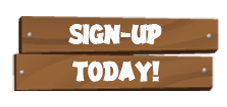I’ve just returned from three excellent professional development events: BC Campus Online Community Enthusiasts (#OCE2012), Northern Voice (#nv12) and Society for Teaching, Learning in Higher Education (#STLHE2012)
I have more specific reflections on each of those events but a very interesting question arose this week that I really want to explore.
#stlhe2012 to those who live tweet – how do you capture & utilize tweets for reference & follow-up?
— Peter (@peterallanwolf) June 21, 2012
To which I responded:
@peterallanwolf sometimes I use tweetdoc.org to archive conference tweets #stlhe2012
— Giulia Forsythe (@giuliaforsythe) June 21, 2012
Which was followed by:
@peterallanwolf Storify is one technology; I’m sure there are other SM aggregators. No doubt the #STLHE2012 Twitter crowd will step up!
— Trent Tucker (@ProfTucker) June 21, 2012
Then:
@giuliaforsythe @peterallanwolf I would use @storifyto create a narrative or an @ifttt “recipe” saving tweets to @evernote for reference
— Gavan Watson (@gavatron) June 21, 2012
This generated a bit of discussion and I thought it would be interesting to take a more detailed look at each of these options.
Starting with my suggestion to use tweetdoc, here is a
PDF archive of all #STLHE2012 tweets
This is really easy to set up and can be done at any time but ideally at the end of an event. The caveat is that it only captures 500 tweets at a time. So if there is a lot of twitter activity you will need to break apart the conference by dates. I had to create two archives and then merged the PDF files into one. This isn’t ideal and there are probably duplicate tweets overlapping the days.
So what about Storify? I’ve used storify for a few different events and really find it is best when you want to include a variety of media: tweets, flickr & instagram pictures, videos, etc. I don’t find it works as well for an entire conference or any scenario where there are more than 25 artifacts. Filtering plays a big role. Also, I’m not sure about the long term viability of using this format for archiving. It relies on multiple tools in the cloud to maintain the status quo. If my work with online courses and linking to external sites has taught me anything it is to expect things to change.
Here is a short storify I created from the closing panel which seemed to get the some of the most twitter activity for a plenary during the entire conference. This is created from the Storify site and you specify which tweets you want to use. This allows you to filter out repeated retweets and/or choose the tweet that really captured the quote the best. Selection is done manually though, so the act of curation obviously takes more time.
stlhe2012 Closing Plenary: Student Panel
Student leaders speak on the future of Canadian post-secondary education
Storified by Giulia Forsythe · Sat, Jun 23 2012 01:10:37
Similarly, you’ll notice that I’ve embedded tweets into this post using twitter’s new built-in embed tool, which is easier than the now-defunct web app called Blackbird Pie. There is still a Blackbird pie wordpress plugin but I don’t see any advantage using the plugin over the built-in tool.
I guess my main concern is the lack of control you have over that content. You are only linking to it and if the owner deletes the tweet or twitter comes up with some Murdoch monetizing scheme and changes our access or terms, then we will no longer have the content at all.
But it sure does look pretty and it is very functional while it still works.
That brings us to wonder about If This Then That, the magical-do-anything-you-can-think-of with just about any tool that has an API.
I browsed through existing recipes and not surprisingly, someone has set up the simple template to capture tweets with a particular hash tag into Evernote.
Authorize both your twitter account and your Evernote account, set up your own parameters and you are set to go. The only trouble is that it doesn’t seem to be able to capture tweets from the past.
Since I started this experiment after the end of STLHE, it’s fairly useless in capturing anything about that conference after the fact.
But with 20,000 K-12 educators descending on San Diego right now for National Educational Computing Conference ISTE12 I have a very active hash tag to experiment with, which will definitely be a test of the robustness of this application.
As suggested in the recipe, I created a public #ISTE12 notebook in Evernote. There were other options for archiving, including avatar, which might make the notebook more visually stimulating but I’m going for simplicity first time out. The sheer volume of tweets may cause some kind of complications but let’s push this to the boundaries, right?
So far after 12 hours there have been 566 tweets. But the conference hasn’t actually started yet so we’ll see what happens after a few days.
What are your thoughts? Any other tools you use for archiving all the wonderful things said and done at conferences? How does this aid your reflection (if at all)?
















